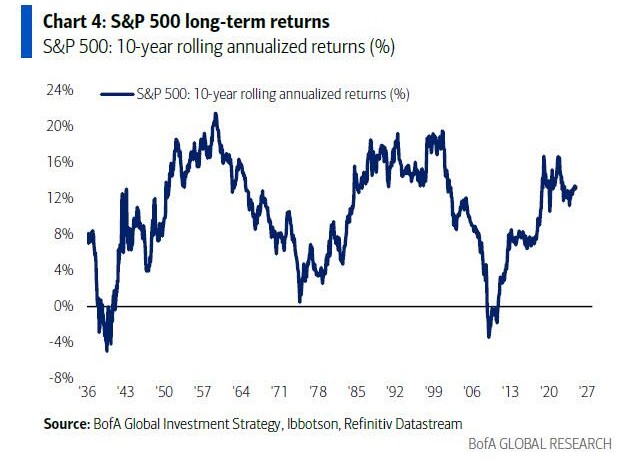
Wall Street's most accurate analyst: The plunge in U.S. bonds has ended because Trump cannot "tolerate debt and deficits"

Hartnett believes that Trump's pursuit of a "small government" means that U.S. Treasury yields will reach a "double top," indicating that the bond yield of 5% will not rise further, and he suggests that investors increase their allocation to longer-duration bonds and interest rate-sensitive assets
After the historic plunge in U.S. Treasuries, Wall Street's most accurate analysts predict that this wave of bond selling may soon come to an end, with the key reason being that the Trump administration "cannot tolerate greater debt and deficits."
Since the Federal Reserve announced a 50 basis point rate cut in September, U.S. Treasury yields have risen by more than 100 basis points, making them one of the worst-performing assets, with the 10-year Treasury yield soaring to nearly 5%. This confirms Bank of America's Chief Investment Strategist Michael Hartnett's long-held view: "Sell on the first rate cut."
However, Hartnett believes that Trump's pursuit of a "small government" means that U.S. Treasury yields will reach a "double top," indicating that the 5% bond yield will not rise further.
First time in 90 years, 10-year rolling returns on U.S. Treasuries fall into negative territory
In his latest report, Hartnett pointed out that in the past 90 years, the 10-year rolling return on 10-year U.S. Treasuries has never been negative until recently, when the 10-year return on U.S. Treasuries first showed a negative value of -0.5%.
 In contrast, during the same period, the long-term return on U.S. stocks was 13.1%, commodities were 4.5%, investment-grade bonds were 2.4%, and Treasury bills were 1.8%. This means that other major asset classes still maintain positive returns, aside from U.S. Treasuries.
In contrast, during the same period, the long-term return on U.S. stocks was 13.1%, commodities were 4.5%, investment-grade bonds were 2.4%, and Treasury bills were 1.8%. This means that other major asset classes still maintain positive returns, aside from U.S. Treasuries.


After a sharp decline, U.S. Treasuries may welcome the "Trump inflection point"
Hartnett pointed out that the Trump administration's "inability to tolerate greater debt and deficits" may become a key factor in ending the bond sell-off. The current size of the U.S. government stands at $7.3 trillion, equivalent to the world's third-largest economy. Over the past five years, U.S. nominal GDP has grown by 50%, a significant portion of which has come from the expansion of government spending. However, this growth momentum may be difficult to sustain by 2025.

Hartnett noted that Trump's pursuit of a "small government" means that U.S. Treasury yields will reach a "double top," indicating that the 5% bond yield will not rise further. Hartnett recommends that investors increase their allocation to longer-duration bonds and interest rate-sensitive assets, such as XHB (Homebuilders), UTIL (Utilities), XLF (Financials), and XBI (Biotechnology)

He also proposed the potential returns of bond portfolios:
If yields fall back to 4%, a "low-risk" bond portfolio (20% T-bills, 20% 30-year U.S. Treasury bonds, 20% investment-grade bonds, 20% high-yield bonds, 20% emerging market bonds) could generate returns of 11-12%;
A "high-risk" bond portfolio (25% 30-year U.S. Treasury bonds, 25% preferred stocks, 25% CCC-rated bonds, 25% emerging market high-yield bonds) could generate returns of 14-15%.
U.S. Treasury Yield Peak Benefits Interest Rate Sensitive Stocks
For the stock market, Hartnett proposed four key observations:
a. The decline of U.S. indices is protected by Trump policies, but the rise is limited by concentration, valuation, and positioning.
b. If yields peak and Trump 2.0 fails to push small-cap stocks (IJR) above the 2021 highs, asset allocators may reduce their overweight in stocks.
c. He recommends buying interest rate sensitive stocks (such as XHB, XLU, XLF, REIT) in the case of a "double top" in yields.
d. For 2025, he is optimistic about international stocks (EU, China, emerging markets), based on policy easing, currency depreciation, and valuation advantages, as well as the peace situation in Russia/Ukraine and the Middle East


